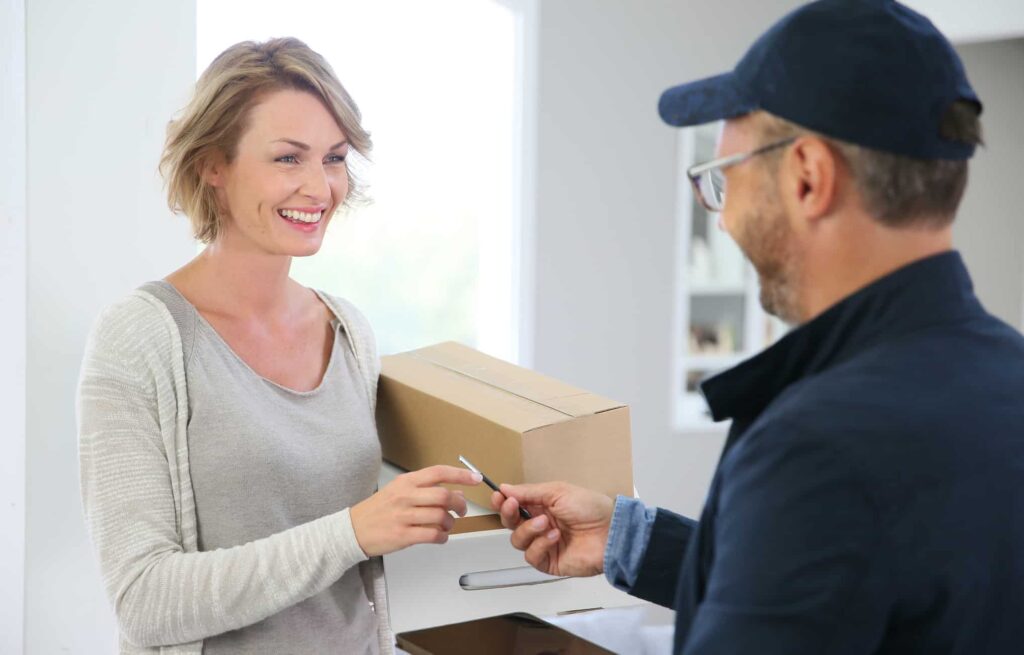The delivery experience has emerged as a differentiating factor for customers when choosing one retailer over another, and enhanced customer expectations and technological advancements are driving what companies can do and what they must do to succeed. eCommerce retailers that operate solely online, and omni-channel retailers that offer a physical and digital presence are both beginning to expand their delivery options to meet customer demand. Here are seven trends that will define retail delivery during 2019.
Automated delivery carriers
Recently when Amazon announced the rollout of drone delivery, we all had immediate visions of city skies filled with drones constantly delivering a flurry of packages for the e-commerce giant. That hasn’t exactly happened, but that doesn’t mean that drone delivery isn’t going to play an important role in the future of home delivery. The use of drones, self-driving vehicles, and other automated solutions are still an important part of the home delivery strategy for many companies going forward.
The standardization of faster delivery times
The general rule is: you don’t have to offer free home delivery in order to compete in the current climate, but your wait times do need to be low and consistent.
Options for real-time customer feedback
In days gone by, customers were perfectly ok with going to a website and searching for contact information, or waiting a couple of days after receiving their purchase to get a feedback request from the company. The landscape of customer feedback has changed dramatically in the last several years, as buyers now expect to have instant options to provide feedback during and after the delivery on their mobile device. Experiences such as ridesharing, where customers are prompted to give a star rating and provide comments at the immediate conclusion of their journey, have redefined customer expectations for the timing and ease of feedback.
Subcontracting last mile delivery
Many companies have found that outsourcing their home delivery services can yield myriad benefits, and the rise of the gig economy has helped facilitate this phenomenon. Outsourcing home delivery makes it easy for many retailers who can’t dedicate staff to the position to offer customers new experiences, but you do have to sacrifice some quality control as a result.
Multiple distribution centers
Fulfilling deliveries and launching products out of multiple distribution centers in one area is often helpful for retailers who have the economies of scale necessary for such a move to be feasible. While this strategy typically offers faster order fulfillment and reduced delivery costs, it does make inventory management more complicated.
The omnipresence of big data
Big data has infiltrated every part of the consumer/brand relationship, and home delivery is no exception. Data analysis is used for everything from helping predict customer orders to suggesting the fastest routes for delivery drivers, and there is no turning back. Your business must be ready to collect, manage, and analyze high-quality data to consistently improve every facet of your home delivery operation.
Improving last-mile visibility
The last mile is the most difficult segment of the home delivery process, because there are so many potential headaches for the retailer. Costs can mount due to a number of factors, and incorrect information or other problems can lead to extended wait times and missed deliveries. And yet customers always expect maximum efficiency and convenience during this time. How can a company reconcile these points?
Increasing the visibility of the last mile experience is vital to bridging the gap between your capabilities and your customers’ needs. Tools such as last mile delivery solutions from Glympse can give businesses the information they need to improve their logistics while simultaneously enhancing the experience for the customer. Contact one of our associates to learn more about how you can use our innovative software to take your last-mile visibility to the next level and WOW your customers with exceptional delivery experiences.


